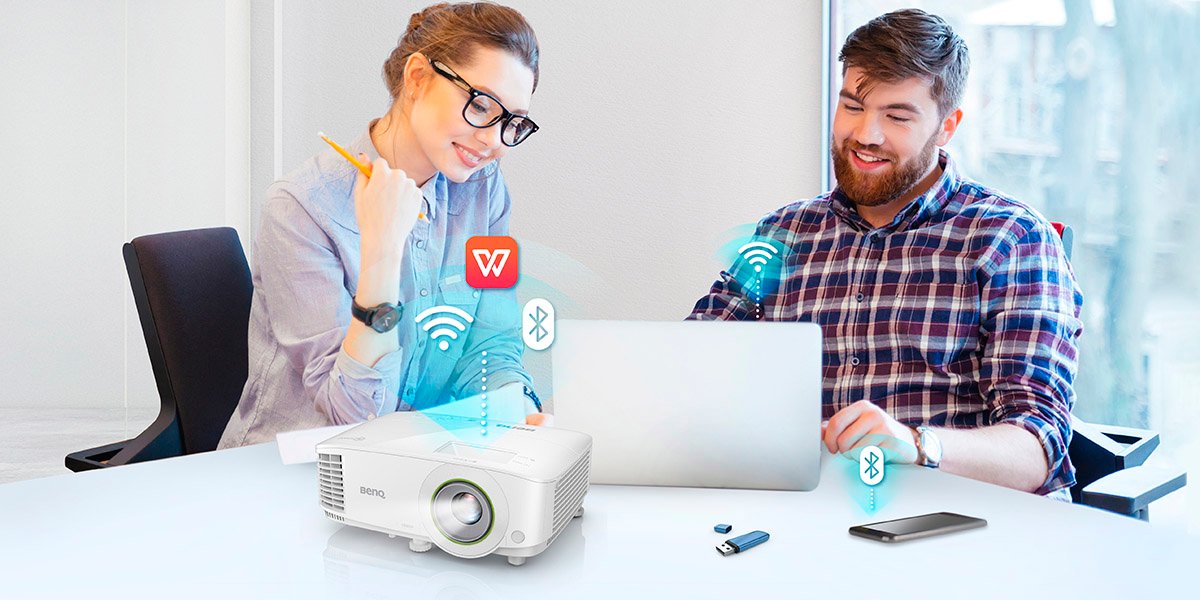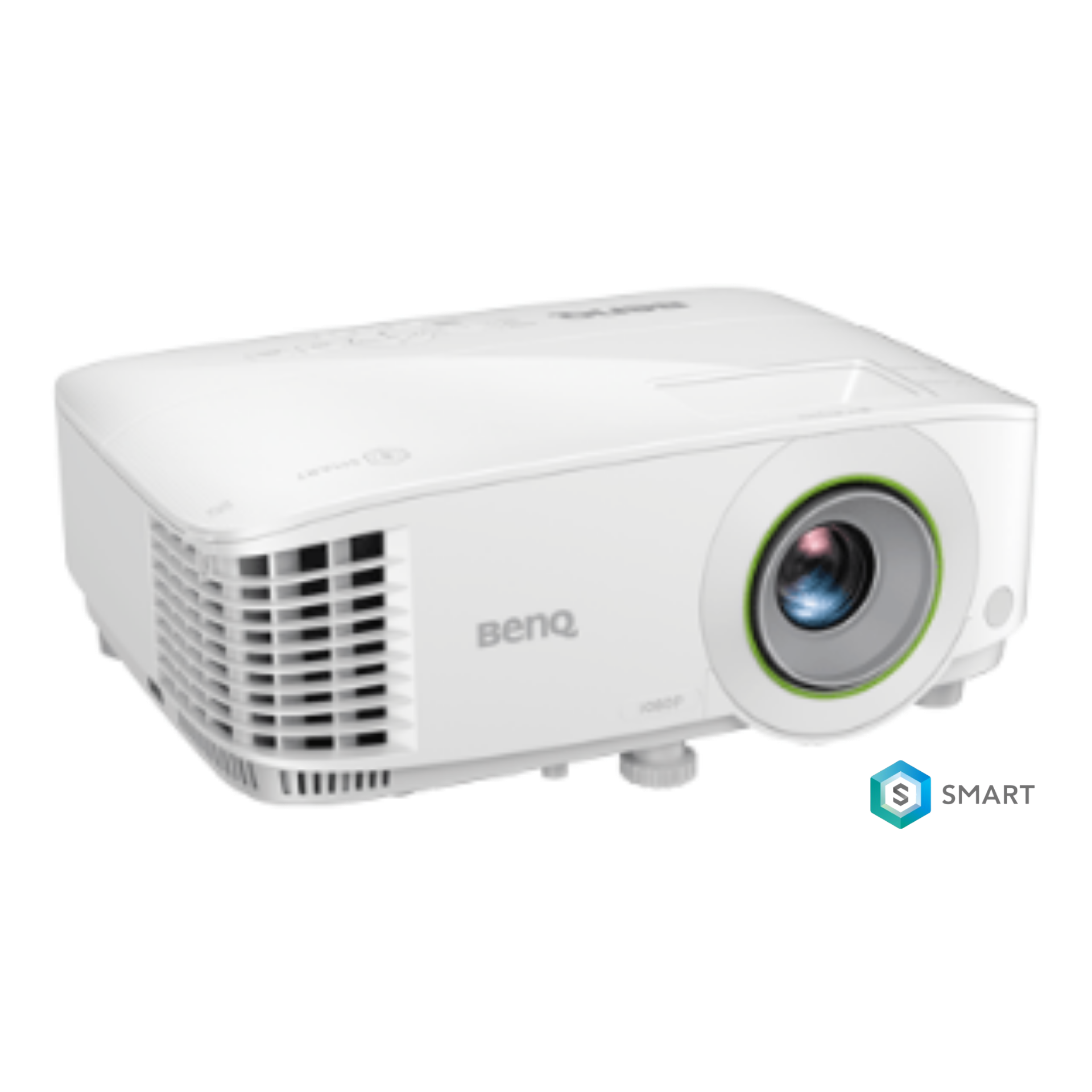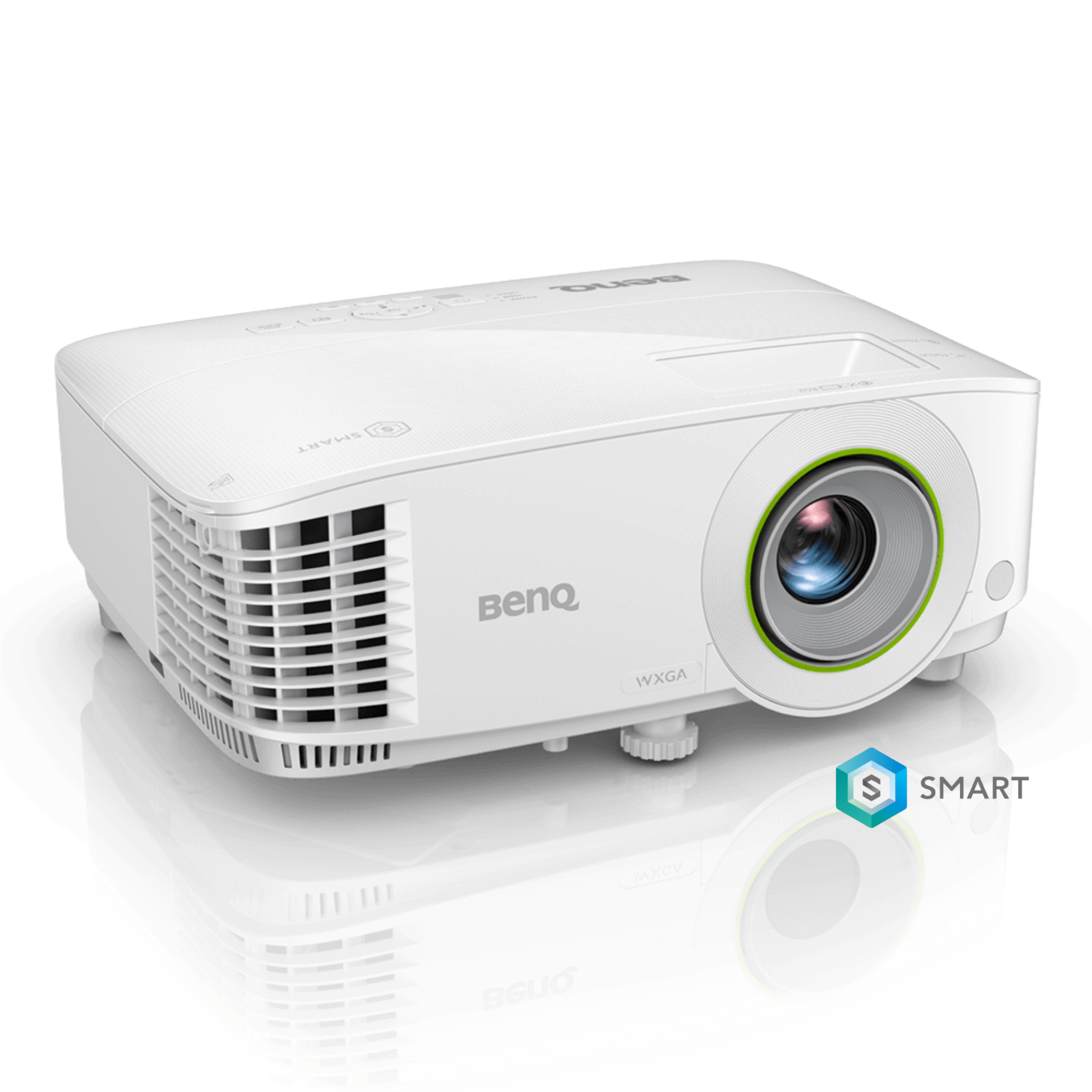Business Projectors - Wireless and Smart Technology Buying Guide
- BenQ
- 2021-06-09
Specifications and features separate basic, run of the mill projectors and good products that will help uplift the capabilities of your enterprise. This is why it’s imperative to look closely at every spec and feature. In a previous article we looked at core aspects that relate directly to projection. And now we’d like to offer a guide to the increasingly-important smart and wireless features that good business projectors must offer in order to give you the best return on your investment. Because without smart capabilities like wireless networking and screen mirroring, a business projector isn’t living up to the full potential you expect.

Wireless Connectivity with Wi-Fi
After over 20 years of Wi-Fi being mainstream, there’s little need to explain the bigger picture. But within the context of business projectors and projectors in general, Wi-Fi is actually a pretty recent arrival. Therefore, it really does matter which version of Wi-Fi a projector offers. Because your team may rely on BYOD (bring your own device), it’s better if the projector is in line with the Wi-Fi version used by other devices. That ensures optimal performance. If the projector employs an older version of Wi-Fi, then user devices with new versions need to run in backward compatibility mode and thus can’t fully leverage newer capabilities like faster wireless data speeds.
When talking about Wi-Fi, we mean the 802.11 standard defined by the IEEE and implemented by the world’s telecom developers and manufacturers, with Wi-Fi 4 (802.11n), Wi-Fi (802.11ac) and the most recent Wi-Fi 6 (802.11ax). Each iteration not only offers more bandwidth and faster wireless connectivity, but also improved range, data quality, security, and a growing number of users and devices that can be connected at the same time to a single router.
Broadly speaking, Wi-Fi 4 was optimized for one user per connection. Wi-Fi 5 upped that to four users, and Wi-Fi 6 doubles the capacity of its predecessor to eight users on a single wireless network, without noticeable throttling or slowing down.
Admittedly, not many projectors offer Wi-Fi 6 as of this writing, and the ones that do may be very costly. For SMBs, Wi-Fi 5 should be perfect, as team sizes tend to be smaller and there’s no need to overspend if you’re not going to have large numbers of users per router.
Note that Wi-Fi is backwards compatible and always defaults to the older version, meaning Wi-Fi 6 slows down to Wi-Fi 4 speeds and not the other way around.
Integrated Wi-Fi or Add-On Dongle?
Clearly from a logical point of view, if the business projector arrives with Wi-Fi capabilities built-in, you’ll get the best performance. That’s because such a design means Wi-Fi was included as part of the projector from initial conception to assembly. The radio and circuitry responsible for delivering wireless connectivity are on the motherboard and balanced with the rest of the projector. This is the best option whenever possible.
Conversely, non-smart projectors may have Wi-Fi added to them with a separate dongle or adapter. These plug into USB or HDMI ports and generally work fine, although performance won’t be as good as integrated Wi-Fi. But this should be fine for smaller teams. However, the dongle does take up a valuable port, especially since unlike desktop PCs, projectors don’t have multiple USB connectors.
A good midpoint are bundled, “built-in” dongles. These are optimized for the projector they ship with, and are attached to the projector. Bundled, attached dongles are fully tested and validated for the projector you buy them with. That’s unlike third party dongles, which are designed for universal use. Attached dongles aren’t as good as integrated, adapter-free Wi-Fi, but they also cost less if budget is a concern. For SMBs, we believe bundled dongles offer good value. Another big advantage of bundled dongles is that they don’t take up any ports, freeing up precious USB connectors for other devices.
Brought Together by Bluetooth
With over 20 years of service under its belt, Bluetooth is probably more pervasive than Wi-Fi in current times thanks to dominating the mobile device space. Smartphones all depend on Bluetooth to connect with other devices and platforms, which gives the standard a ready install base in the many billions of devices.
With business projectors in mind, Bluetooth forms another great way of supporting BYOD since users can link their personal smart devices to the projector via Bluetooth. Unlike Wi-Fi, Bluetooth is designed for ad hoc device-to-device connections over short distances, typically no more than 20 meters. Note that the latest version of Bluetooth is 5.2, with a range of reportedly over 40 meters. Bluetooth 5.2 isn’t commonly implemented, and in most cases you’ll find devices with Bluetooth 4.2 or 5.0. For an office or work situation, Bluetooth would be very helpful in pairing a projector with user smartphones, tablets, and laptops. But also headphones, speakers, keyboards, and mice. All of these device classes commonly offer Bluetooth to reduce cable clutter.
An advantage of Bluetooth is that no internet connection is needed to create a Personal Area Network, or PAN. Unlike Wi-Fi and its reliance on a router and an internet service provider, Bluetooth enables quick content transfer and connectivity directly between devices, with no additional hardware or services needed.
As to which Bluetooth specs to look for, we recommend Bluetooth 4.2 as a minimum, that’s when the Bluetooth organization introduced Bluetooth Smart or Bluetooth LE (low energy). These specs have smart sleep modes and power consumption management to reduce battery drain and power consumption across all paired devices, whether it’s the projector, a paired keyboard, or a mouse.
Screen Mirroring and Casting
Those two are one and the same, just two ways of referring to the process of duplicating the display of a portable device like a smartphone on the big format display of a projector. Doing so makes presenting content in meetings much easier and smoother, with snappy transitions between presenters as needed. It’s a far more elegant solution than messing around with connecting and disconnecting laptops.
Screen mirroring requires dedicated protocols, as neither Wi-Fi nor Bluetooth were specifically designed with display duplication in mind. Also, screen mirroring obviously works only across short distances, so the sending and receiving devices need to be in the same room, with both supporting the mirroring protocol of your choosing. Do keep in mind that screen mirroring generally does require the presence of a local wireless network, as in a router. However, you don’t need to be connected to the external internet for mirroring to work locally.
Apple AirPlay for iOS devices and Google Cast for Android and iOS platforms are the two main screen mirroring and casting standards around.
Apple AirPlay
Used to mirror screen contents of iOS devices to compatible destination devices, like a business projector, Apple Airplay does require Wi-Fi presence, as the sending device and receiving device need to be on the same SSID, or service set identifier. That just means the same wireless network. BenQ is among the few business projector makers that offers direct support for AirPlay on projectors, with no setup or dedicated app needed. While this is increasingly common in the home projector market, native AirPlay support remains rare among enterprise-class projectors.
Google Cast
Very closely associated with Google’s bestselling Chromecast, the protocol works on other devices as well. Google Cast is very device-agnostic, meaning it works with both Android and iOS as well as Windows devices. You can easily mirror content from phones, tablets, and laptops to a TV or projector using Google Cast. The Chromium-based design of Google Cast allows for mirroring specific tabs in a browser rather than the entire desktop or screen. As such, Google Cast offers better support for multitasking, since you can choose to share (mirror) one tab while doing work in other tabs that aren’t mirrored.
Projector Operating Systems and Other Considerations
Projectors have operating systems, you ask? Well, they always did, but those were so basic you didn’t even notice them. Smart business projectors run operating systems very much like the ones on your PC or smartphone, hence the numerous new capabilities and smart features these projectors support. Really good smart business projectors have everything they need to work on their own in a truly PC-free fashion, including business apps, that greatly simplifies matters and prevents meeting room messes from forming.
We recommend projectors that use the Android operating system for several reasons. First among these is familiarity. Android is very intuitive on its own, but being so popular on smartphones it’s also very familiar to most of your team members. That makes operating the projector second nature to pretty much everyone in attendance, as the interface and core functions are all the same as those on people’s phones.
Note neither iOS nor Windows have a presence on projectors. Only the open-source design of Android has so far proven popular, but keep in mind that if you see an older version of Android in the specs it’s not the end of the world. For projectors, it may actually be a benefit, as you’ll have less downtime due to frequent updates and revisions as may be the case on smartphones. In short, a slightly older Android version is OK for a business projector.
Cloud Storage is Essential
No device is smart these days without access to cloud storage. Sure, cloud is just another word for online, but that doesn’t matter. What does is that you have the ability to access files and other types of content directly from the projector via the internet or a private network, although the latter is usually thought of as intranet rather than cloud access.
Cloud storage frees you from depending on physical storage devices that you need to carry around, and which may get lost, damaged, or fall into the wrong hands. Since your smart business projector has Wi-Fi, you have cloud storage access direct and unhindered, with no reliance on a laptop or other devices. However, if you wish to access the cloud from your smartphone or tablet and then mirror to the projector, that works.
Google Drive and Microsoft OneDrive offer the most complete cloud storage services currently. Clear benefits over traditional means of saving content beyond easy access and sharing are abundant. Chief among them is the auto synchronization of file versions while storing a history of previous versions. This eliminates the classic “which one is the latest version?” issue. Usability and accessibility are big pros, as well. Both popular cloud storage services have very intuitive interfaces, and are backed by robust server networks with virtually no downtime or data loss. You can access content anytime and anywhere. There’s also support for multiple users per account, so entire teams can use one account to reduce the odds of confusion and crossed wires.
Worth the Investment
While traditional, simple projectors may appear appealing at first, over time they are not appropriate for today’s businesses and organizations. To get the best value out of your investment in a projector, we strongly recommend opting for a model with wireless and smart capabilities that supports your teams now and will continue to do so in the future, as technology and work culture become even more focused on connectivity.
Take a look at four big steps for choosing the best smart projector.



